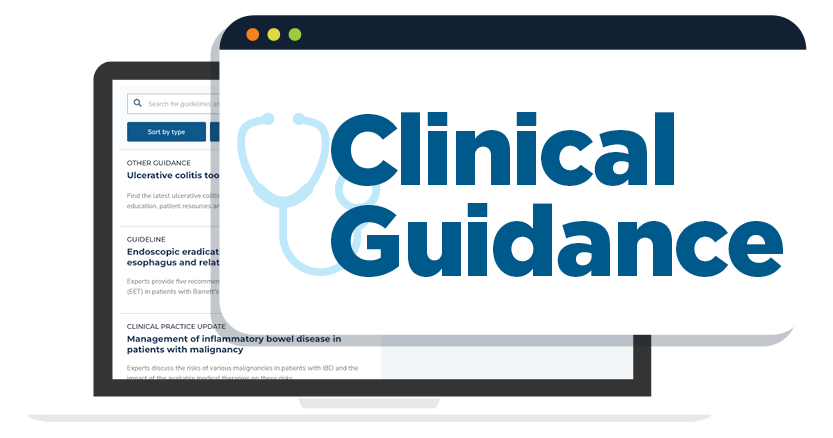1. Ongoing or recent alcohol consumption > 21 drinks on average per week in men and > 14 drinks on average per week in women is a reasonable definition for significant alcohol consumption when evaluating patients with suspected nonalcoholic fatty liver disease (NAFLD) in clinical practice.
2. When patients with unsuspected hepatic steatosis detected on imaging have symptoms or signs attributable to liver disease or have abnormal liver biochemistries, they should be evaluated as though they have suspected NAFLD and worked-up accordingly.
3. In patients with unsuspected hepatic steatosis detected on imaging who lack any liver-related symptoms or signs and have normal liver biochemistries, it is reasonable to assess for metabolic risk factors (e.g., obesity, glucose intolerance, dyslipidemia) and alternate causes for hepatic steatosis such as significant alcohol consumption or medications.
4. In patients with unsuspected hepatic steatosis detected on imaging who are asymptomatic and have normal liver biochemistries, a liver biopsy cannot be recommended.
5. Screening for NAFLD in adults attending primary care clinics or high-risk groups attending diabetes or obesity clinics is not advised at this time due to uncertainties surrounding diagnostic tests and treatment options, along with lack of knowledge related to the long-term benefits and cost-effectiveness of screening.
6. Systematic screening of family members for NAFLD is currently not recommended.
7. When evaluating a patient with suspected NAFLD, it is essential to exclude competing etiologies for steatosis and co-existing common chronic liver disease.
8. Persistently high serum ferritin and increased iron saturation, especially in the context of homozygote or heterozygote C282Y HFE mutations may warrant a liver biopsy.
9. High serum titers of autoantibodies in association with other features suggestive of autoimmune liver disease (very high aminotransferases, high globulin) should prompt a more complete work-up for autoimmune liver disease.
10. As the metabolic syndrome predicts the presence of steatohepatitis in patients with NAFLD, its presence can be used to target patients for a liver biopsy.
11. NAFLD Fibrosis Score is a clinically useful tool for identifying NAFLD patients with higher likelihood of having bridging fibrosis and/or cirrhosis.
12. Although serum/plasma CK18 is a promising biomarker for identifying steatohepatitis, it is premature to recommend in routine clinical practice.
13. Liver biopsy should be considered in patients with NAFLD who are at increased risk to have steatohepatitis and advanced fibrosis.
14. The presence of metabolic syndrome and the NAFLD Fibrosis Score may be used for identifying patients who are at risk for steatohepatitis and advanced fibrosis.
15. Liver biopsy should be considered in patients with suspected NAFLD in whom competing etiologies for hepatic steatosis and co-existing chronic liver diseases cannot be excluded without a liver biopsy.
16. Weight loss generally reduces hepatic steatosis, achieved either by hypocaloric diet alone or in conjunction with increased physical activity.
17. Loss of at least 3-5% of body weight appears necessary to improve steatosis, but a greater weight loss (up to 10%) may be needed to improve necroinflammation.
18. Exercise alone in adults with NAFLD may reduce hepatic steatosis but its ability to improve other aspects of liver histology remains unknown.
19. Metformin has no significant effect on liver histology and is not recommended as a specific treatment for liver disease in adults with nonalcoholic steatohepatitis (NASH).
20. Pioglitazone can be used to treat steatohepatitis in patients with biopsy-proven NASH. However, it should be noted that majority of the patients who participated in clinical trials that investigated pioglitazone for NASH were non-diabetic and that long term safety and efficacy of pioglitazone in patients with NASH is not established.
21. Vitamin E (α-tocopherol) administered at daily dose of 800 IU/day improves liver histology in non-diabetic adults with biopsy-proven NASH and therefore it should be considered as a first-line pharmacotherapy for this patient population.
22. Until further data supporting its effectiveness become available, vitamin E is not recommended to treat NASH in diabetic patients, NAFLD without liver biopsy, NASH cirrhosis or cryptogenic cirrhosis.
23. Ursodeoxycholic acid (UDCA) is not recommended for the treatment of NAFLD or NASH.
24. It is premature to recommend omega-3 fatty acids for the specific treatment of NAFLD or NASH but they may be considered as the first line agents to treat hypertriglyceridemia in patients with NAFLD.
25. Foregut bariatric surgery is not contraindicated in otherwise eligible obese individuals with NAFLD or NASH (but without established cirrhosis).
26. The type, safety and efficacy of foregut bariatric surgery in otherwise eligible obese individuals with established cirrhosis due to NAFLD are not established.
27. It is premature to consider foregut bariatric surgery as an established option to specifically treat NASH.
28. Patients with NAFLD should not consume heavy amounts of alcohol.
29. No recommendation can be made with regards to non-heavy consumption of alcohol by individuals with NAFLD.
30. Given the lack of evidence to show that patients with NAFLD and NASH are at increased risk for serious drug-induced liver injury from statins, statins can be used to treat dyslipidemia in patients with NAFLD and NASH.
31. Until randomized controlled trials (RCTs) with histological endpoints prove their efficacy, statins should not be used to specifically treat NASH.
32. When steatosis and steatohepatitis are evident in patients with other types of chronic liver disease, it is important to assess for metabolic risk factors and alternate etiologies for hepatic steatosis.
33. In patients with other types of chronic liver diseases who have co-existing NAFLD and NASH, there are no data to support the use of vitamin E or pioglitazone to improve the liver disease.
34. Patients with NASH cirrhosis should be screened for gastroesophageal varices according to the American Association for the Study of Liver Diseases (AASLD)/American College of Gastroenterology (ACG) practice guidelines.
35. Patients with NASH cirrhosis should be considered for HCC screening according to the AASLD/ACG practice guidelines.
36. Current evidence does not support routinely repeating a liver biopsy in patients with NAFL or NASH.
37. Children with fatty liver who are very young or not overweight should be tested for monogenic causes of chronic liver disease such as fatty acid oxidation defects, lysosomal storage diseases and peroxisomal disorders, in addition to those causes considered for adults.
38. Low serum titers of autoantibodies are often present in children with NAFLD, but higher titers, particularly in association with higher serum aminotransferases and high globulin should prompt a liver biopsy to evaluate for possible autoimmune hepatitis.
39. Due to a paucity of evidence, a formal recommendation cannot be made with regards to screening for NAFLD in overweight and obese children despite a recent expert committee recommendation for biannual screening for liver disease with liver enzyme measurements in this population.
40. Liver biopsy in children with suspected NAFLD should be performed in those where the diagnosis is unclear, where there is possibility of multiple diagnoses, or before starting therapy with potentially hepatotoxic medications.
41. A liver biopsy to establish a diagnosis of NASH should be obtained prior to starting children on pharmacologic therapy for NASH.
42. Pathologists interpreting pediatric NAFLD biopsies should recognize the unique pattern frequently found in children to not misidentify pediatric NAFLD.
43. Intensive lifestyle modification improves aminotransferases and liver histology in children with NAFLD and thus should be the first line of treatment.
44. Metformin at 500 mg twice daily offers no benefit to children with NAFLD and thus should not be prescribed. The effect of metformin administered at a higher dose is not known.
45. Vitamin E 800 IU/day (RRR α–tocopherol) offers histological benefits to children with biopsy-proven NASH or borderline NASH but confirmatory studies are needed before it’s use can be recommended in clinical practice.












